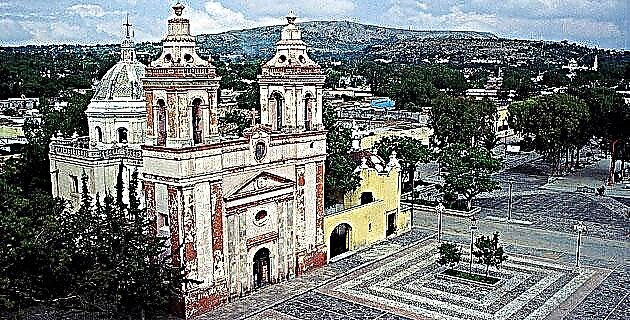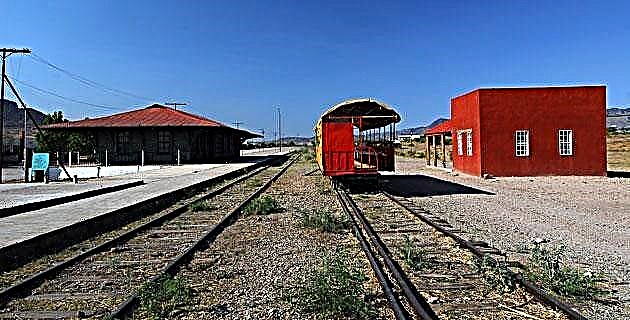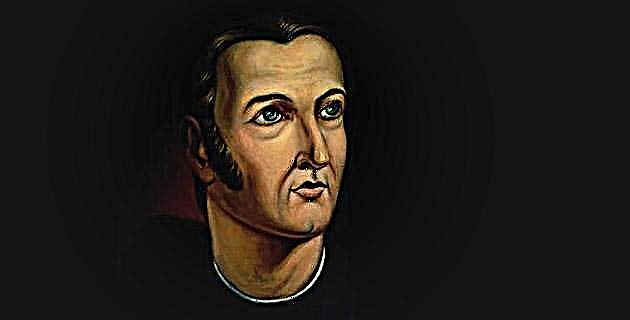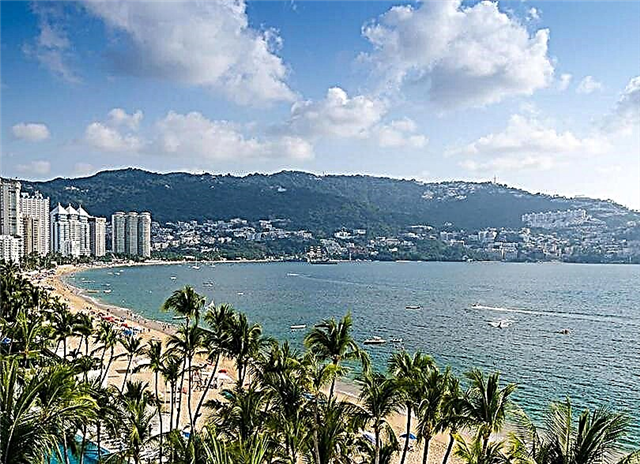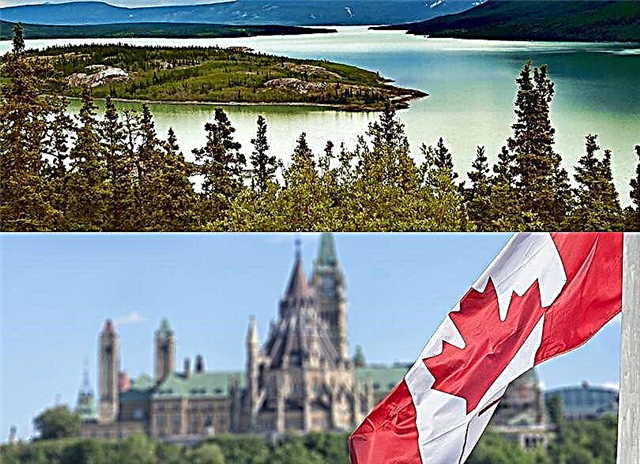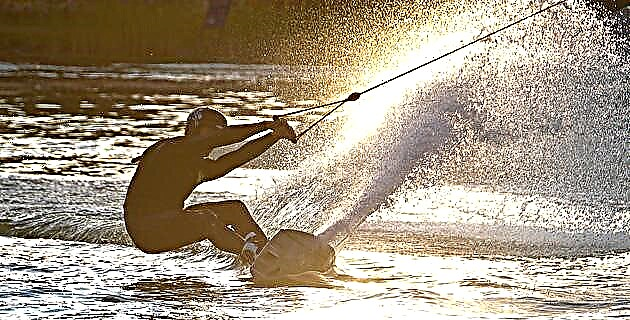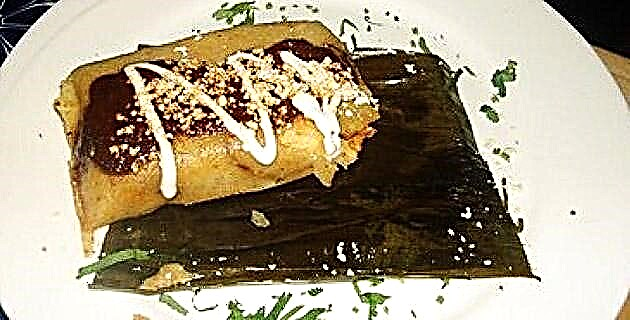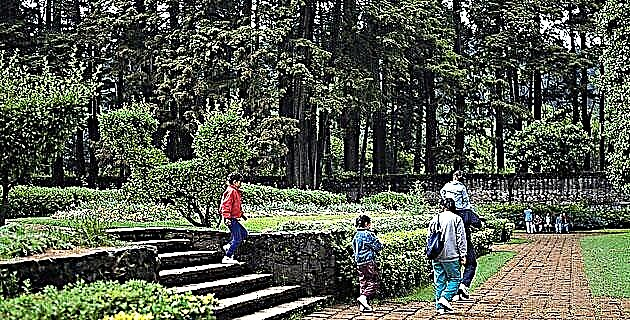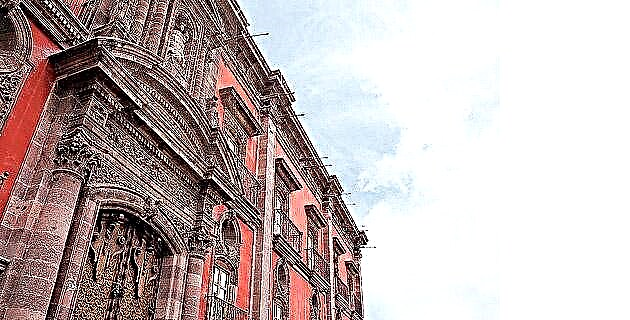
Casa del Mayorazgo de la Canal
Casa del Mayorazgo de la Canal
Located in one of the corners facing the main garden of San Miguel de Allende, the formerly called Palacio de los Condes de la Canal —because they were the ones who built it— is a sample of the aristocratic residences of the 18th century.
Its majestic neoclassical façade shows us the family's coats of arms. On the second level there is a niche with the sculpture of Our Lady of Loreto, patron saint of the family, flanked by two pairs of columns that hold a medallion with a coat of arms of the order of Calatrava, as a finish.
From the corner room you can see the most important accesses to the city of San Miguel; and there its former inhabitants stood guard during the war of independence, to give the voice of alert when the royalist troops came.
Currently the building belongs to the National Bank of Mexico, and constitutes a sample and example of what can be done with a deteriorated and not very functional property, turning it into a magnificent residence, as is the specific case of the Casa de los Condes de la Canal . In Guanajuato there are several large houses in cities and farms, waiting for someone to restore them to be able to open their doors to tourism, either as hotels, restaurants, art galleries, etc.
Do you like cacti or orchids?
Since 1991, the Cante botanical garden exists in San Miguel de Allende, whose name comes from the Pima-Chichimeca language, can-te, which means "water that gives life." This name is given to the springs in the mountains of the Sierra Gorda in Guanajuato.
Cante is a cactus research center where you can find more than a thousand species of cacti, and in its greenhouse you can acquire an incredible number of specimens of different sizes, shapes and colors.
The Cante cycle begins with research and continues with propagation, conservation, restoration, etc., and even encompasses motivational and educational aspects, each an integral part of the whole.
Like cacti and succulents, orchids store water in their tissues. They are the most numerous and diverse plants (more than 30 thousand species) known in the world.
These plants have been the passion of Mr. Stirling Dickinson, who came to live in San Miguel in 1930. In his collection there is a great variety of Mexican species, including the famous orchid discovered by him, the Cypripedium dickinsonianum.
If you are interested in visiting and knowing Cante, your address is:
Mesones 71, San Miguel de Allende 37700, Guanajuato, Mexico Tel. (415) 2 29 90 / Fax (415) 2 40 15
Atotonilco
Touring the town of Atotonilco is like walking the streets of Comala that Juan Rulfo describes in his novel Pedro Páramo. In the middle of these three or four ghostly streets, sits a majestic sanctuary from the 18th century, dedicated to Jesús Nazareno.
The facade of the building is smooth, with very high walls topped by an inverted arcade, as if forming a holán. Upon entering the temple, the contrast is striking: the main nave and all the walls are decorated with wall paintings that represent countless passages and religious characters, without keeping much order and no space between them. They were made by a native of the place, Miguel Antonio Martínez de Pocasangre, over a period of thirty years and using only daylight. The features and color of these images are reminiscent of Flemish paintings, represented in Belgian prints, that the Spanish brought to New Spain.
From inside the sanctuary, on September 16, 1810, the insurgents took the banner of the Virgin of Guadalupe that served as a flag in the struggle for the Independence of Mexico.
Between four or five times a year, Atotonilco comes alive. There is a deeply rooted tradition: the eight-day retreats or spiritual exercises that take place in the facilities of the old convent.
Flaked candles
During the party that begins after Corpus Christi Thursday, the Señor del Hospital church in the city of Salamanca receives 50 to 65 candles a day.
The interior of the church is transformed by the beauty of the huge candles, finely crafted to the satisfaction of the different unions that fervently come to light these beautiful objects manufactured by Don Ramón Ramírez López, heir to an artisan tradition to which four have dedicated themselves. generations of that family.
These candles are also lit in the field to ask for rain on the day of San Isidro Labrador.
The candles, famous for their ornamentation, were made of reed and hemp, and the molds for making the flowers were made of wood. Over time the tradition has been maintained, even though techniques have changed, since the structure is made of wire and the molds are made of fiberglass. Ornate candles are also made in Villagrán, Valle de Santiago, Uriangato and Yuriria.
For strawberries, Irapuato
The strawberry, introduced in Mexico in the middle of the last century, found in the fertile lands of Irapuato the ideal conditions for its cultivation. That is why the strawberries of that region are famous and for many years they have delighted those who, driven by the whim, stop their car on the side of the road to enjoy delicious strawberries with cream ...
Have you tried shrimp ice cream?
If you go to Dolores Hidalgo, be sure to take a walk through the spacious central square, savoring the famous ice cream and ice cream with exotic flavors, such as mole, avocado, shrimp, tequila, pulque, as well as those that we all know them as chocolate, vanilla or lemon.
Diego Rivera Museum
In this same house that the museum occupies today, Diego Rivera was born in 1886 the great Mexican painter and muralist. Fortunately, the house retains the original decoration. The visitor can go directly to an interior space where the furniture and personal objects of the artist and his family are displayed.
Also on display is the artist's collection of paintings that were owned by Eng. Marte R. Gómez, as well as watercolors, oils and sketches.
The museum, located in Positos núm. 47, opens its doors in the mornings from 10 a.m. to 1 p.m., and in the afternoons from 4 p.m. to 6 p.m.
Visit Jesús Gallardo in his house-workshop
We could define the master Jesús Gallardo as the gentleman painter. Since he opened the door of his house to us, in the San Javier neighborhood, we have felt the sweetness and affectionate education of a tender and generous man, like most of the people of Guanajuato.
In his paintings he captures the tranquility and harmony of the countryside where he lived as a child, on his ranch in León. The colors are soft and the lines lilting. He likes nature and knows how to paint it. He has mastered the technique of engraving, and it is a pleasure to watch him work in his workshop.
At the age of 17, the teacher Jesús Gallardo began his studies at the Academia de San Carlos, in Mexico City, and later, in 1952, founded the School of Plastic Arts at the University of Guanajuato. In 1972 he painted the murals of the Municipal Palace of León.
When we say goodbye to him, we take in the spirit the greatness of the landscape of his land.
Dolores Hidalgo Cradle of National Independence
In what was an Otomí settlement called Cocomacán, a word that means “place where herons are hunted”, the brotherhood of Nuestra Señora de los Dolores was erected between the years 1568 and 1570. Even though in 1791 the congregation had reached the category town, it was not until the nineteenth century that this place, considered the cradle of Independence, achieved the title of city. The air that is breathed in Dolores Hidalgo makes this small urban nucleus a very attractive place for those who go in search of a quiet and provincial atmosphere that is only interrupted by the hubbub of the national holidays, which here acquire a special meaning. It is recommended to visit the parish and the house where the priest Hidalgo lived.
Yuriria, the imprint of Plateresque
This town, of scarce 15,000 inhabitants and located at 1,882 meters above sea level, is famous for its monumental 16th century convent, which the chroniclers of bygone eras described as “the most magnificent building that can be thought”. From its cloister it was stated that "the stars in the sky were seen first than the battlements on the roof."
The monastery, now adapted as a museum, exhibits interesting relics, including paintings of Mexican missionaries slaughtered in the Far East.
Its temple has the shape of a Latin cross, very rare in the 16th century, with beautiful Gothic vaults in the transept and in the barrel of the nave. Its cover, in the Plateresque style, is also exceptional.
Yuriria has its lake: Yuririapúndaro, which means "lake of blood", an indigenous name that refers to the coloration that the lagoon sometimes showed, due to the action of certain aquatic plants.
What boots to buy?
The place of purchase must be a prestigious shoe store. It is important that the last is comfortable, especially the instep; that when bending the ankle, do not disturb. The heel cap will be soft: rubber or leather but not hard plastic, as the spine would be impacted when walking. The sole and the sole are made of leather, the latter being made of corrugated rubber or of the "rim" type. The best boot is the one with the “Good year welt” stitching. The spine will be made of steel and the staking of wood, to confirm.
Rancho La Pitaya Hotel and Spa
At kilometer 16 of the free highway to Celaya, on the border with the state of Querétaro and only 10 minutes from the latter's capital, there is a magnificent development, Rancho La Pitaya, a combination of a hotel of great luxury and comfort. villas, equestrian and tennis club, bike path, and the largest SPA in Latin America, fifth in the world, with 3,500 m2 of surface.
The objective of this development is to create an environment of well-being and awareness towards a deep and permanent change, where health represents a vital achievement, through a highly personalized, professional, humane and warm service.
Inside the SPA there is the hydrotherapy area of the thermal and therapeutic pool, medical and nutritional evaluations, facials, therapeutic massages, treatments with the fabulous "thermal clay" of the place, training circuits and free weights, cardiovascular equipment, aerobics classes, etc.
In an environment of contrasts, the highest technology and the tranquility of the countryside combine to offer avant-garde development that does not disdain ancestral wisdom and knowledge.

